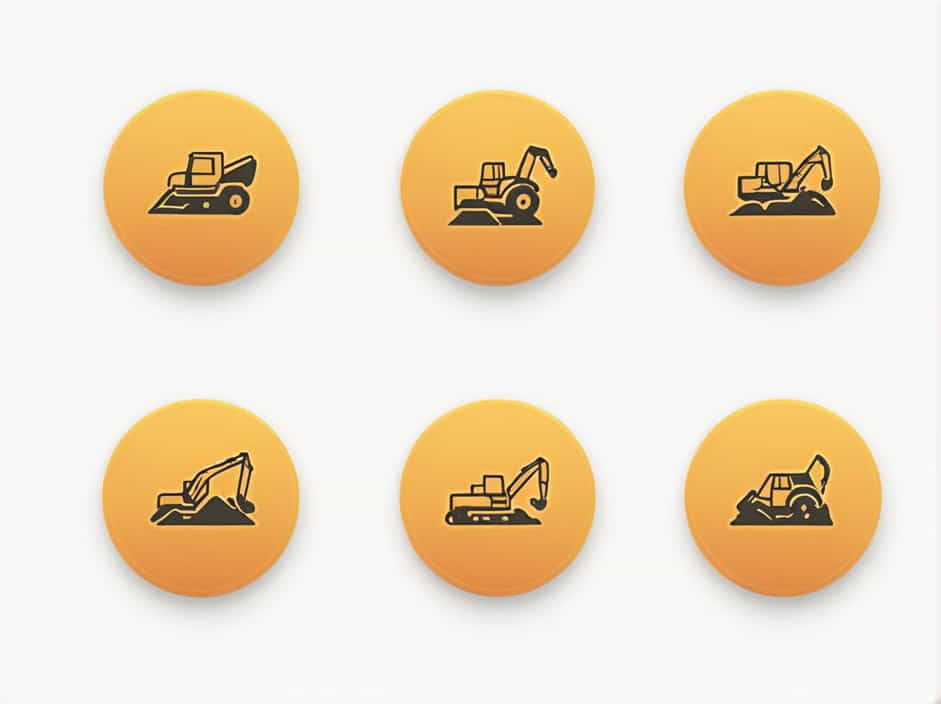Excavation is a term commonly used in construction, archaeology, and mining to describe the process of removing earth, rock, or other materials from a site. This technique is essential for creating building foundations, roadways, tunnels, and archaeological discoveries.
Understanding excavation is important not only for professionals in these industries but also for anyone interested in how structures are built and historical sites are uncovered. This topic will explain what excavation means, its types, methods, and safety measures in simple terms.
What Is Excavation?
Excavation refers to the process of digging, removing, and relocating soil, rock, or other materials from a specific area. It is performed using manual tools, heavy machinery, or specialized equipment depending on the project’s size and purpose.
Excavation is commonly used in:
✔ Construction – Preparing land for buildings, bridges, and roads.
✔ Archaeology – Uncovering historical artifacts and ancient ruins.
✔ Mining – Extracting valuable minerals and resources.
✔ Landscaping – Shaping land for gardens, ponds, and drainage systems.
The process involves careful planning and execution to ensure safety, environmental protection, and structural stability.
Types of Excavation
There are different types of excavation, each serving a specific purpose. Here are some of the most common ones:
1. Topsoil Excavation
This involves removing the upper layer of soil, which contains organic matter, vegetation, and roots. It is commonly done before construction to create a stable base.
2. Earth Excavation
In this method, deeper layers of soil are removed to prepare for building foundations, roads, and drainage systems.
3. Rock Excavation
When a site has large rock formations, special equipment like drilling, blasting, or hydraulic breakers is used to break and remove rocks.
4. Muck Excavation
This type of excavation deals with mud, waterlogged soil, or unstable ground that needs to be removed or treated before construction.
5. Cut and Fill Excavation (Stripping)
In large projects like road construction or land leveling, excavation is done by cutting higher areas and filling lower areas to create an even surface.
6. Trench Excavation
Trenches are narrow, deep excavations used for installing pipes, cables, or foundations. This type of excavation requires extra precautions to prevent collapses.
7. Dredging Excavation
When excavation is needed underwater, dredging is used to remove sediments, debris, or sand from lakes, rivers, or harbors.
8. Archaeological Excavation
Archaeologists carefully dig through layers of soil to uncover artifacts, fossils, and historical structures while preserving delicate finds.
Excavation Methods
Depending on the project, excavation can be done using different methods:
1. Manual Excavation
✔ Done with hand tools like shovels, pickaxes, and buckets.
✔ Used for small-scale projects or delicate work in archaeology and gardening.
2. Mechanical Excavation
✔ Uses bulldozers, backhoes, excavators, and loaders.
✔ Ideal for large construction projects where speed and efficiency are important.
3. Blasting Excavation
✔ Uses explosives to break hard rock or tough soil.
✔ Common in mining and large-scale construction but requires strict safety measures.
4. Suction Excavation
✔ Uses a vacuum-like machine to remove loose soil or debris.
✔ Useful for delicate excavation work near underground utilities.
5. Hydraulic Excavation
✔ Involves using high-pressure water to loosen soil and rocks.
✔ Used in mining, tunneling, and industrial projects.
Each method is chosen based on soil type, project size, and safety requirements.
Steps in the Excavation Process
1. Site Survey and Planning
✔ Engineers and surveyors study the site using maps, soil tests, and environmental assessments.
✔ Permits and approvals are obtained before excavation begins.
2. Clearing and Marking the Site
✔ Trees, vegetation, and debris are removed.
✔ The area is marked to guide excavation work.
3. Excavation and Soil Removal
✔ Machinery or manual labor is used to dig and remove soil.
✔ The excavated material is either used for filling, transported, or disposed of.
4. Stabilization and Safety Measures
✔ Retaining walls, bracing, or shoring are installed to prevent collapses.
✔ Drainage systems may be added to prevent water buildup.
5. Inspection and Final Adjustments
✔ Engineers inspect the site to ensure accuracy and safety before construction begins.
✔ Any necessary adjustments are made to the excavated area.
Safety Measures in Excavation
Excavation can be dangerous if proper safety precautions are not followed. Here are some key safety measures:
1. Preventing Cave-Ins
✔ Use trench boxes, shoring, or sloping to prevent walls from collapsing.
2. Checking for Underground Utilities
✔ Before digging, check for pipes, cables, or gas lines to avoid accidents.
3. Using Protective Gear
✔ Workers should wear helmets, gloves, boots, and safety vests.
4. Monitoring Air Quality
✔ In deep excavations, oxygen levels and toxic gases must be checked.
5. Controlling Water Accumulation
✔ Pumps or drainage systems prevent flooding in excavation sites.
6. Proper Equipment Operation
✔ Only trained operators should handle heavy machinery to reduce risks.
Common Excavation Challenges
Excavation projects can face several challenges, including:
✔ Unstable Soil – Weak or sandy soil can cause walls to collapse.
✔ Water Seepage – Underground water can flood the site.
✔ Hidden Obstacles – Large rocks, tree roots, or buried structures can delay work.
✔ Weather Conditions – Rain, snow, or extreme heat can slow down excavation.
✔ Legal and Environmental Regulations – Permits and environmental laws must be followed.
Engineers and construction teams must plan carefully to overcome these challenges.
Applications of Excavation
Excavation is widely used in different industries:
✔ Construction – Roads, bridges, buildings, tunnels, and dams.
✔ Mining – Extracting coal, minerals, and metals.
✔ Archaeology – Discovering ancient artifacts and fossils.
✔ Landscaping – Creating ponds, terraces, and gardens.
✔ Disaster Recovery – Digging through debris after landslides or earthquakes.
Why Is Excavation Important?
Excavation is a crucial process in construction, archaeology, and mining, helping to shape landscapes, uncover history, and build essential structures. Understanding its types, methods, and safety measures ensures that excavation is done efficiently and safely.
Whether you are planning a construction project or simply interested in how excavation works, knowing its purpose and challenges can provide valuable insights into this essential process.
